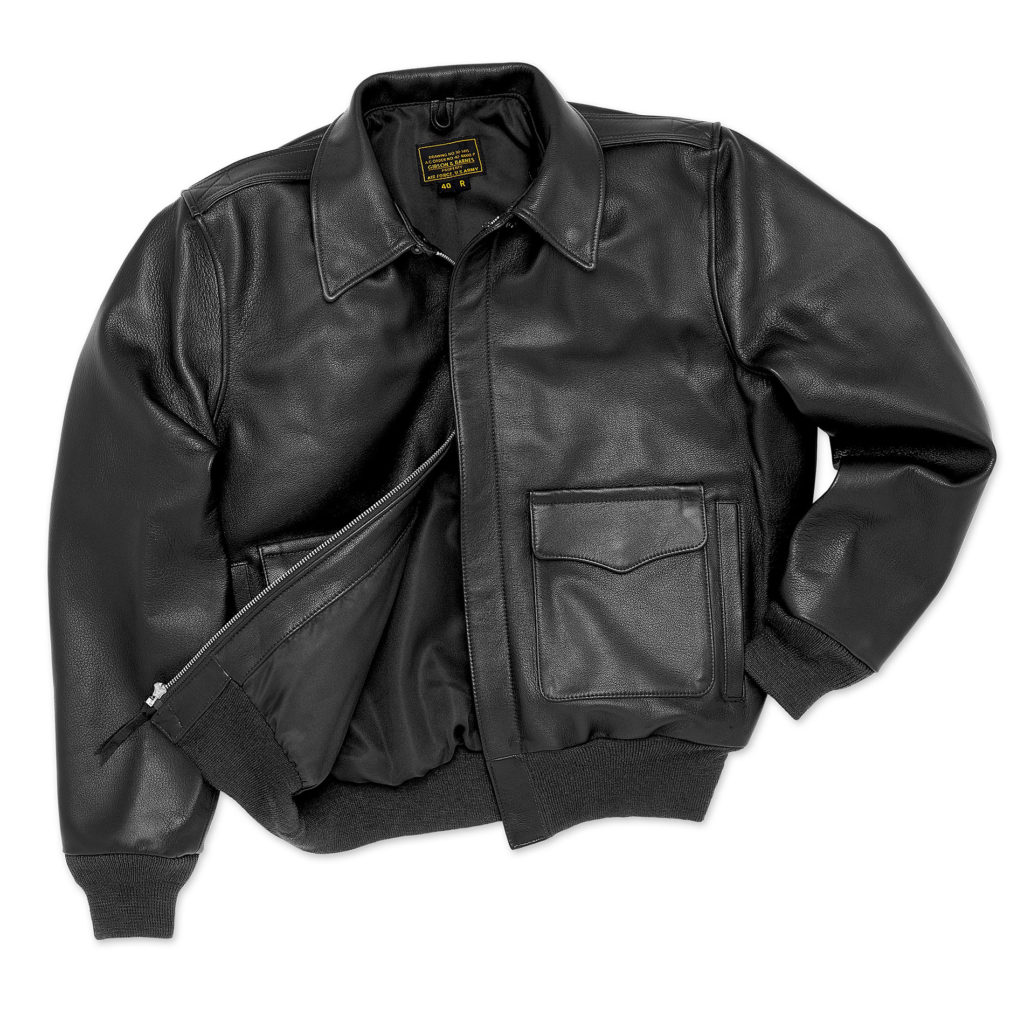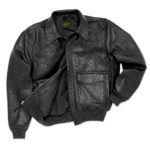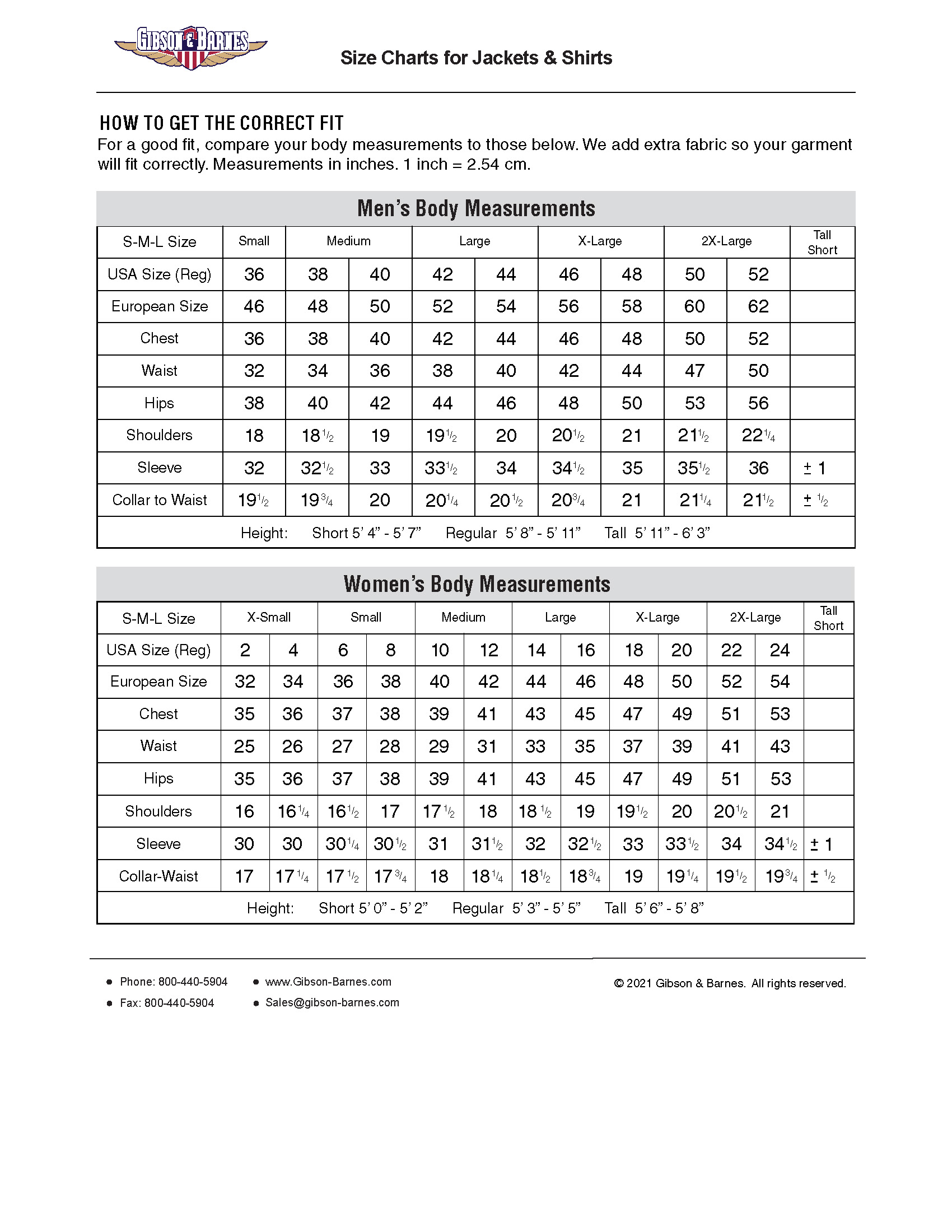Leather Color
Gibson & Barnes uses grade A and B leather even though it can cost twice as much as lower grades. Your jacket will be more beautiful and will last longer because high quality hides need only a light coat of pigment.
We also use large hides so we can make your jacket with fewer pieces. Many of our jackets have one-piece backs, and our sleeves are cut from only two pieces of leather. We also throw away our scrap leather and don’t try to hide it under the collar or under a pocket flap. Your jacket will look better, feel better, and last longer.
Goatskin is perfect jacket leather because it is durable as well as supple, soft to the touch, and very comfortable to wear. Goatskin jackets last so long they are passed down from generation to generation. We’ve seen goatskin jackets at look even better after 50 years of wear man they did when new. Both the Navy and Air Force use goatskin for their G-1 and A-2 flight jackets.
F-82 Flight Jacket Colors – Dark Brown and Black Goatskin
Leather Terminology
Chrome Tanned – Leather preserved with chromium compounds and other mineral agents to produce supple leather for garments, shoes, and gloves.
Vegetable Tanned – Leather preserved with tannins from ‘bark, seeds, and wood to produce strong and slightly stiff leather for luggage and belting.
Drum Dyed – Leather dyed in a rotating drum so that the dye completely penetrates the leather.
Aniline Dyed – Leather dyed with transparent aniline dyes to produce a beautiful transparent finish and suppleness. No pigment is used, but a light finish may be applied to color or protect the leather.
Semi-Aniline – Aniline dyed leather topped with a very light coat of pigment and finish to even out the color and increase durability.
Pigmented – Leather coated with resin containing pigment. Pigment gives leather a uniform color and shade. Low-grade leather needs thick coats of pigment to cover up cuts and scars.
Thickness – Leather thickness is measured in millimeters or ounces per square foot. One-ounce equals about 1/54 inch or 0.40 millimeters thickness. Jacket leather is usually between two and four ounces.
Top Grain – Leather from which only the hair and under flesh have been removed. It is a higher quality leather.
Split Grain – The lower-quality bottom layer of a skin that has been split into a top and bottom layer. The bottom layer can be made into suede or highly pigmented to give it the appearance of top grain.
Grade – Leather grades range from A to D depending on the type and number of flaws. Grade A hides are clean with no flaws. Grade B has a few slight imperfections. Grade C has healed cuts. Grade D has unhealed cuts. The higher the grade, the less pigment needed to finish the leather and the
more beautiful the finished jacket.
Shearling – Sheepskin with the wool attached. The wool can be straightened or left naturally curly.
Mouton – Sheepskin with the wool attached that has been sheared and dyed to resemble beaver or seal.
Leather Tanning
Leather Tanning Steps
1. Raw skins are soaked in a vat of salt brine to temporarily preserve them.
2. Preserved skins are soaked for several days in a solution of lime sodium sulfate to remove hair and fat.
3. Clean skins are treated in a bating vat with an enzyme and sulfate chloride to remove the lime.
4. Hides are placed in a tanning drum with chromium compounds vegetable tannin.
5. Tanned hides are placed in a fat liquoring drum with oils and greases to increase pliability.
6. Hides are dyed with chemical or vegetable dyes in a rotating drum.
7. Dyed hides are milled in a rotating drum to soften them.
8. Milled leather is rolled, stretched, and dried to make it strong and uniform.
9. Leather is finished with pigment, wax, oil, or glaze.
10. Finished leather may be buffed or polished.


